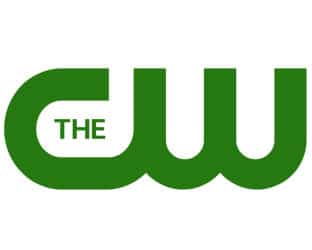The man who has emerged in recent months as a “Wordy Rappinghood of Wall Street” for his prolific reports on the state of advertising-fueled businesses — including broadcast media — has offered an update on ad growth estimates for 2017 and the following four years.
According to Pivotal Research Group Senior Research Analyst for Advertising Brian Wieser, local media dollars are sailing southward. But, radio’s revenue dip will be smaller than that of local TV.
In Wieser’s August 2017 report, he predicted underlying expansion in the 4%-5% range for advertising.
Now, he’s refining that call, and expects 4.4% underlying expansion for 2017.
The forecast came in an investor note released early Monday (9/25) that reviews “some of the key challenges ahead, especially for TV and digital advertising, which account for the bulk of the industry’s activity.”
In short, Wieser reiterates his prior ruminations on the negative long-term aspects of advertising for television. He adds that digital media is also seeing some challenges.
First, he says, “Among the large packaged goods marketers and big brands who dominate television, we have market-share losses to smaller brands driving reduced spending for many who budget for advertising as a percentage of revenue and zero-based budgeting tactics for others.”
Further, Wieser notes, “There do not seem to be many significant new categories of marketers whose constituents are large, consumer focused, differentiated themselves on the basis of awareness of attributes, budget on a share-of-voice basis and operate in nationally oriented and oligopolistic sectors.”
As those categories emerged in the past, he says, they drove up pricing for all and revenues for owners of national television properties in particular.
“Increasingly fragmented and often unmeasured viewing makes it harder, if not more expensive to use television efficiently,” Wieser says of today’s climate for TV advertising.
While it remains the “least inefficient” medium for many, it’s difficult for Wieser to see a path to growth.
That’s sobering news for the TV industry’s C-Suites.
“We generally see ad revenue growth at national TV media outlets declining by around 2% each year going forward, excluding incremental spending associated with the Olympics, similar to our expectation for this year,” Wieser concludes.
LOCAL MASS MEDIA TO SEE DOWNHILL DIPS
Breaking down the ad dollar forecast from Pivotal for 2017, total national dollars are expected to increase by 1%, to $73.9 billion. Total local dollars are forecast to fall by 3%, to $57.3 billion.
The five-year Compound Average Growth Rate (CAGR) for total national dollars is statistically flat, at 0.5%.
The CAGR for local dollars, however, is -3.6%.
Total national television for FY17 is predicted to see ad dollars fall 1.9%, to $44.3 billion, and its CAGR is -2.2%.
Spanish-language broadcast TV, once the realm of riches for Univision and Telemundo, is also seemingly at the precipice of a post-peak dip: Wieser forecasts national TV ad dollars for Hispanic media to slip 0.5%, to $1.52 billion, in FY17. While these dollars will grow an estimated 5% in 2018 thanks to the Olympics and some political ad spend, growth is expected to slide some 8.6% in 2019 and decline another 0.8% in 2020 and by 1.2% in 2021. This puts Hispanic broadcast TV’s five-year CAGR at -1.3%.
Local television dollars were broken out by broadcast and cable segments. For Pivotal, cable will be able to plug the loss of ad dollars a bit better than its broadcast cousins. Local broadcast TV will see a 2.2% decline in FY17, to $15.03 billion. The five-year CAGR is -3.9%.
Cable’s five-year CAGR is 1.3%, with statistically flat growth expected for FY17, with $4.81 billion in ad dollars.
In fact, radio’s ad dollar haircut looks a bit better than the declines anticipated for VHF and UHF stations, even as improvements anticipated from ATSC 3.0 offset a post-spectrum repack process that’s only just begun.
According to Wieser, total local radio is anticipated to see a 1.9% decline in ad growth in 2017, coming in at $12.56 billion.
While that’s a bit less than the $14.18 billion seen by local radio in FY2010, the negative ad growth percentage is at its lowest point since mid-2014.
That’s an encouraging sign for AM and FM broadcasters, as their TV brethren may start to sweat a little more.
DIGITAL DOWNTURN?
Wieser also calls out the digital advertising sector for having a moment, “and not a good one.”
Beyond ad quality issues, Wieser and his team at Pivotal has concerns that marketers will concern themselves more with basic trustworthiness of media owners, the capacity to use personal data going forward as well as the underlying effectiveness of digital media more generally.
“Ad quality issues of viewability, brand safety, fraud and bots are problematic of course, but ultimately seem relatively manageable for marketers vs. the latter group of problems,” Wieser says. “Facebook’s recently publicized issues around mis-matches between audience data provided for planning purposes vs. data from global census bureaus and its initial inability to find ads from Russian propogandists follow on several other incidents over the past year, all of which compromise claims Facebook makes to marketers. This has tangible implications.”
Procter & Gamble Co. eliminated $140 million in digital advertising in the second quarter. As conveyed in a lawsuit with one of its advertising agencies, Uber eliminated spending on app installs earlier this year. Restoration Hardware eliminated most of the keywords it was buying from search engines.
“In each instance, each company indicated there was no negative business impact,” Wieser notes. “While digital advertising can be incredibly effective, these three cases are very public examples of the heightened scrutiny that is being applied to digital advertising from the highest levels of marketers’ organizations, whereas relatively little rigor was applied before.”
Thus, he advises, “Marketers must begin looking at new approaches to use digital media more generally.”
Even with the risks associated with digital media, it won’t impact “observably” digital ad growth. Why? “Performance-based marketing is increasingly common, as businesses with digital-centric business models take share (as with Dollar Shave Club vs. Gillette) and concentrate spending on digital media.”
That’s why Pivotal forecasts 21% growth in the medium in 2017.





